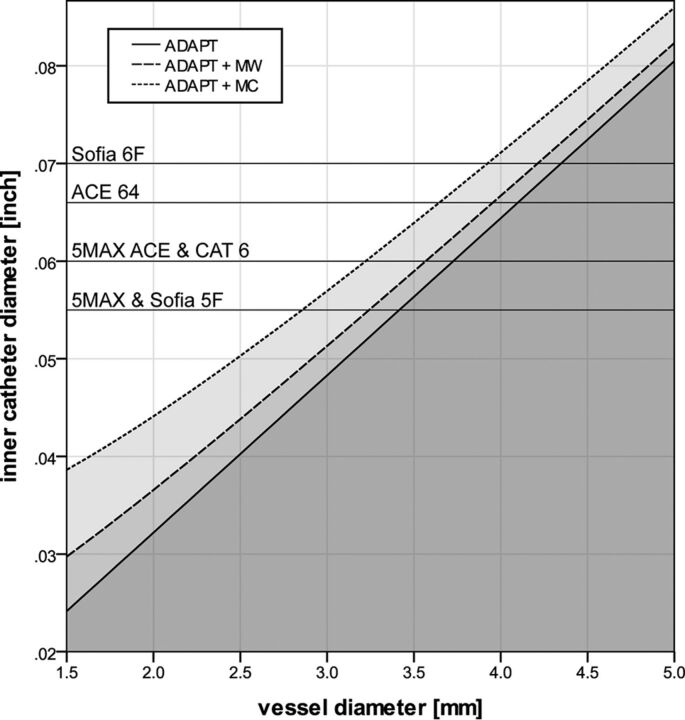Fig 3.
Correlations between minimal catheter size and vessel diameter in an average patient. Graphs represent the minimal inner catheter diameter (y-axis) needed to overcome the force that keeps a clot in its position in a vessel with a given diameter (x-axis), using ADAPT with manual aspiration in an average patient (ie, a pressure gradient of 60 mm Hg before and behind the clot). The continuous line represents the ADAPT technique without microcatheters or microwires in the aspiration catheter. Dotted lines represent the ADAPT technique with an additional microcatheter (MC) or microwire (MW) in the aspiration catheter. Gray areas under the curves correspond to catheter diameters that are not large enough for ADAPT. Given the lower pressure provided by a pump, catheters need to be approximately 1% larger than indicated in the figure when a pump instead of a syringe is used for aspiration. Black horizontal lines represent the inner diameters of various commercially available catheters: Sofia (MicroVention); AXS Catalyst 6 (CAT6; Stryker); and 5MAX, 5MAX ACE, and ACE64 (Penumbra).

